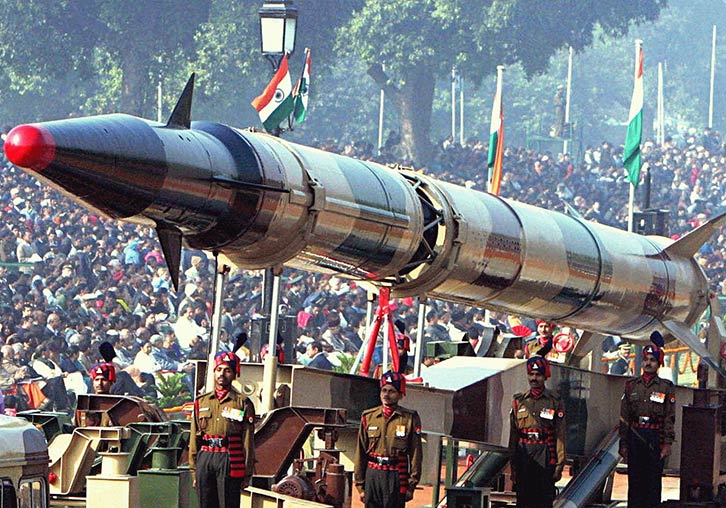What you must know about Agni V

Developed by the Defence Research and Development Organisation (DRDO) of India Agni V is a long range surface-to-surface nuclear-capable intercontinental ballistic missile part of the Agni series of missiles. Agni V was launched at Dr Abdul Kalam Island in the Bay of Bengal on 10 December 2018 at 1.30 p.m. from the ITR with the help of a mobile launcher from launch pad-4 of the ITR. Here’s what you need to know about the missile:
Agni V is part of the Agni series of missiles, initiated under the original Integrated Guided Missile Development Program. The Agni missile series are- Agni I with a range of 700 km, Agni-II with a range of 2,000 km, Agni-III and Agni-IV with 2,500 km to more than 3,500 km range.
The first test of Agni-V was conducted on 19 April 2012. The first two flights of Agni-5 in 2012 and 2013 were done in open configuration. The third, fourth and fifth launch were carried out from canister integrated with a mobile launcher.
Agni V has a development cost of over 2,500 crore (US$348 million), Agni-V incorporated advanced technologies involving ring laser gyroscope and accelerometer for navigation and guidance.
The range of Agni V missile is 5,500–5,800 km. In fact until recently; the longest range missile we had had was Agni III and Agni IV with a range of 2,500–3500 km.
Primarily designed for enhancing India’s nuclear deterrence against China, Agni-V range of 5000 will allow the Indian military to hit any target in China from Agni V bases in central and southern India. The missile will also allow India to strike targets across Asia and into Europe.
The missile was designed to be easy to transport by road through the utilisation of a canister-launch missile system which is distinct from those of the earlier Agni missiles. Agni-V would also carry MIRV (multiple independently targetable re-entry vehicles) payloads being concurrently developed. A single MIRV equipped missile can deliver multiple warheads at different targets.
Extremely advanced in navigation, guidance, warhead and engine, Agni V is a three-stage missile and is 17 metre tall and 2 metre wide and a payload capacity of 1,500 kg of high-explosive warhead.
The nuclear-capable missile is expected to be inducted into India’s Strategic Forces Command soon, and India will be among nations such as USA, Russia, China, France, and Britain boasting intercontinental ballistic missile capabilities.
Also read: Remembering late APJ Abdul Kalam, India’s missile man on his death anniversary
















Add comment